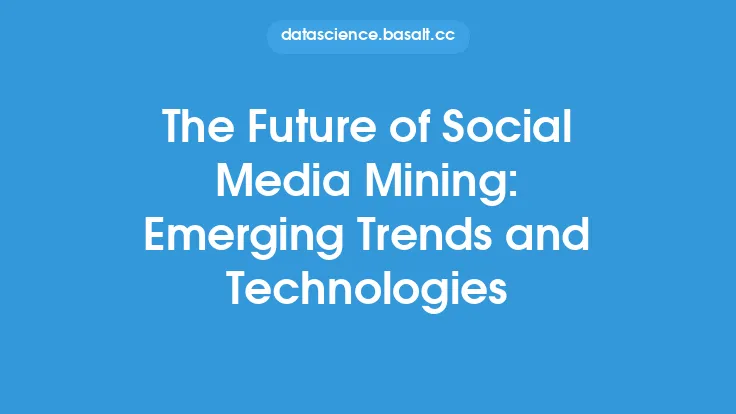Named Entity Recognition (NER) is a fundamental concept in Natural Language Processing (NLP) that involves identifying and categorizing named entities in unstructured text into predefined categories. These categories can include names of people, organizations, locations, dates, times, and other relevant information. The goal of NER is to extract and classify these entities, enabling computers to understand the meaning and context of the text.
Introduction to Named Entity Recognition
Named Entity Recognition is a crucial step in many NLP applications, such as information extraction, question answering, and text summarization. It helps to identify the key elements in a text, such as the names of people, organizations, and locations, and to understand the relationships between them. NER can be applied to various types of text, including news articles, social media posts, and documents.
Types of Named Entities
There are several types of named entities that can be recognized in text, including:
- Person: Names of individuals, such as "John Smith" or "Jane Doe".
- Organization: Names of companies, institutions, or organizations, such as "Google" or "Harvard University".
- Location: Names of cities, countries, or other geographical locations, such as "New York" or "London".
- Date: Dates, such as "January 1, 2020" or "2022-01-01".
- Time: Times, such as "10:00 AM" or "14:30".
- Event: Names of events, such as "World Cup" or "Olympics".
- Product: Names of products, such as "iPhone" or "Tesla Model S".
Approaches to Named Entity Recognition
There are several approaches to Named Entity Recognition, including:
- Rule-based approach: This approach uses predefined rules to identify named entities in text. These rules can be based on the syntax and semantics of the language.
- Machine learning approach: This approach uses machine learning algorithms to train a model on a labeled dataset. The model can then be used to identify named entities in new, unseen text.
- Hybrid approach: This approach combines the rule-based and machine learning approaches to achieve better results.
Machine Learning Algorithms for NER
Several machine learning algorithms can be used for Named Entity Recognition, including:
- Conditional Random Fields (CRFs): CRFs are a type of discriminative model that can be used for sequence labeling tasks, such as NER.
- Support Vector Machines (SVMs): SVMs are a type of supervised learning algorithm that can be used for classification tasks, including NER.
- Recurrent Neural Networks (RNNs): RNNs are a type of neural network that can be used for sequence labeling tasks, such as NER.
- Long Short-Term Memory (LSTM) networks: LSTMs are a type of RNN that can be used for sequence labeling tasks, such as NER.
- Transformers: Transformers are a type of neural network that can be used for sequence labeling tasks, such as NER.
Challenges in Named Entity Recognition
Named Entity Recognition is a challenging task, and there are several challenges that need to be addressed, including:
- Ambiguity: Named entities can be ambiguous, and it can be difficult to determine the correct category.
- Context: The context in which a named entity appears can affect its meaning and category.
- Language: Named Entity Recognition can be language-dependent, and different languages can have different grammatical structures and syntax.
- Domain: Named Entity Recognition can be domain-dependent, and different domains can have different types of named entities.
Applications of Named Entity Recognition
Named Entity Recognition has several applications, including:
- Information extraction: NER can be used to extract relevant information from text, such as names of people, organizations, and locations.
- Question answering: NER can be used to identify the key elements in a question and to provide a relevant answer.
- Text summarization: NER can be used to identify the key elements in a text and to provide a summary.
- Sentiment analysis: NER can be used to identify the sentiment of a text towards a particular entity or topic.
Evaluation Metrics for Named Entity Recognition
The performance of a Named Entity Recognition system can be evaluated using several metrics, including:
- Precision: The precision of a system is the number of true positives divided by the number of true positives plus the number of false positives.
- Recall: The recall of a system is the number of true positives divided by the number of true positives plus the number of false negatives.
- F1-score: The F1-score is the harmonic mean of precision and recall.
- Accuracy: The accuracy of a system is the number of true positives plus the number of true negatives divided by the total number of instances.
Conclusion
Named Entity Recognition is a fundamental concept in Natural Language Processing that involves identifying and categorizing named entities in unstructured text into predefined categories. It has several applications, including information extraction, question answering, and text summarization. The performance of a Named Entity Recognition system can be evaluated using several metrics, including precision, recall, F1-score, and accuracy. Despite the challenges, Named Entity Recognition is a crucial step in many NLP applications, and it continues to be an active area of research and development.





